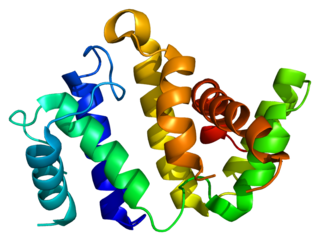| TGM6 | |||||||||||||||||||||||||||||||||||||||||||||||||||
|---|---|---|---|---|---|---|---|---|---|---|---|---|---|---|---|---|---|---|---|---|---|---|---|---|---|---|---|---|---|---|---|---|---|---|---|---|---|---|---|---|---|---|---|---|---|---|---|---|---|---|---|
| Identifiers | |||||||||||||||||||||||||||||||||||||||||||||||||||
| Aliases | TGM6 , SCA35, TG6, TGM3L, TGY, dJ734P14.3, transglutaminase 6 | ||||||||||||||||||||||||||||||||||||||||||||||||||
| External IDs | OMIM: 613900 MGI: 3044321 HomoloGene: 27970 GeneCards: TGM6 | ||||||||||||||||||||||||||||||||||||||||||||||||||
| |||||||||||||||||||||||||||||||||||||||||||||||||||
| |||||||||||||||||||||||||||||||||||||||||||||||||||
| |||||||||||||||||||||||||||||||||||||||||||||||||||
| |||||||||||||||||||||||||||||||||||||||||||||||||||
| |||||||||||||||||||||||||||||||||||||||||||||||||||
| Wikidata | |||||||||||||||||||||||||||||||||||||||||||||||||||
| |||||||||||||||||||||||||||||||||||||||||||||||||||
Transglutaminase 6 is a protein that in humans is encoded by the TGM6 gene. [5]
| TGM6 | |||||||||||||||||||||||||||||||||||||||||||||||||||
|---|---|---|---|---|---|---|---|---|---|---|---|---|---|---|---|---|---|---|---|---|---|---|---|---|---|---|---|---|---|---|---|---|---|---|---|---|---|---|---|---|---|---|---|---|---|---|---|---|---|---|---|
| Identifiers | |||||||||||||||||||||||||||||||||||||||||||||||||||
| Aliases | TGM6 , SCA35, TG6, TGM3L, TGY, dJ734P14.3, transglutaminase 6 | ||||||||||||||||||||||||||||||||||||||||||||||||||
| External IDs | OMIM: 613900 MGI: 3044321 HomoloGene: 27970 GeneCards: TGM6 | ||||||||||||||||||||||||||||||||||||||||||||||||||
| |||||||||||||||||||||||||||||||||||||||||||||||||||
| |||||||||||||||||||||||||||||||||||||||||||||||||||
| |||||||||||||||||||||||||||||||||||||||||||||||||||
| |||||||||||||||||||||||||||||||||||||||||||||||||||
| |||||||||||||||||||||||||||||||||||||||||||||||||||
| Wikidata | |||||||||||||||||||||||||||||||||||||||||||||||||||
| |||||||||||||||||||||||||||||||||||||||||||||||||||
Transglutaminase 6 is a protein that in humans is encoded by the TGM6 gene. [5]
The protein encoded by this gene belongs to the transglutaminase superfamily. It catalyzes the cross-linking of proteins and the conjugation of polyamines to proteins. Mutations in this gene are associated with spinocerebellar ataxia type 35 (SCA35). Alternatively spliced transcript variants encoding different isoforms have been found for this gene. [provided by RefSeq, Dec 2011].
Mutations in TGM6 cause acute myeloid leukaemia. [6] The presence of antibodies against TG6 is statistically related to gluten ataxia, amongst other conditions.

Ataxin-1 is a DNA-binding protein which in humans is encoded by the ATXN1 gene.

Protein-glutamine gamma-glutamyltransferase K is a transglutaminase enzyme that in humans is encoded by the TGM1 gene.

Cav2.1, also called the P/Q voltage-dependent calcium channel, is a calcium channel found mainly in the brain. Specifically, it is found on the presynaptic terminals of neurons in the brain and cerebellum. Cav2.1 plays an important role in controlling the release of neurotransmitters between neurons. It is composed of multiple subunits, including alpha-1, beta, alpha-2/delta, and gamma subunits. The alpha-1 subunit is the pore-forming subunit, meaning that the calcium ions flow through it. Different kinds of calcium channels have different isoforms (versions) of the alpha-1 subunit. Cav2.1 has the alpha-1A subunit, which is encoded by the CACNA1A gene. Mutations in CACNA1A have been associated with various neurologic disorders, including familial hemiplegic migraine, episodic ataxia type 2, and spinocerebellar ataxia type 6.

Ataxin-3 is a protein that in humans is encoded by the ATXN3 gene.

Tyrosyl-DNA phosphodiesterase 1 is an enzyme that in humans is encoded by the TDP1 gene.

Twinkle protein also known as twinkle mtDNA helicase is a mitochondrial protein that in humans is encoded by the TWNK gene located in the long arm of chromosome 10 (10q24.31).

Elongation of very long chain fatty acids protein 4 is a protein that in humans is encoded by the ELOVL4 gene.

Alpha-tocopherol transfer protein (α-TTP) is a protein that in humans is encoded by the TTPA gene.

ATP-binding cassette sub-family B member 7, mitochondrial is a protein that in humans is encoded by the ABCB7 gene.

Protein CBFA2T2 is a protein that in humans is encoded by the CBFA2T2 gene.

Fibroblast growth factor 14 is a biologically active protein that in humans is encoded by the FGF14 gene.

Spectrin beta chain, brain 2 is a protein that in humans is encoded by the SPTBN2 gene.

Rho GTPase activating protein 26 (ARHGAP26) also known as GTPase Regulator Associated with Focal Adhesion Kinase (GRAF) is a protein that in humans is encoded by the ARHGAP26 gene.

Puratrophin-1 is a protein that in humans is encoded by the PLEKHG4 gene.
Ataxin 8 opposite strand, also known as ATXN8OS, is a human gene.

Tau tubulin kinase 2 is a protein in humans that is encoded by the TTBK2 gene. This gene encodes a serine-threonine kinase that putatively phosphorylates tau and tubulin proteins. Mutations in this gene cause spinocerebellar ataxia type 11 (SCA11); a neurodegenerative disease characterized by progressive ataxia and atrophy of the cerebellum and brainstem.

Potassium voltage-gated channel, Shaw-related subfamily, member 3 also known as KCNC3 or Kv3.3 is a protein that in humans is encoded by the KCNC3.

Synaptotagmin XIV is a protein that in humans is encoded by the SYT14 gene.

Coiled-coil domain containing 88C is a protein that in humans is encoded by the CCDC88C gene.

Cytochrome c oxidase assembly factor 7 (putative) (COA7), also known as Beta-lactamase hap-like protein, Respiratory chain assembly factor 1 (RESA1), Sel1 repeat-containing protein 1 (SELRC1), or C1orf163 is a protein that in humans is encoded by the COA7 gene. The protein encoded by COA7 is an assembly factor important for the mitochondrial respiratory chain. Mutations in COA7 have been associated with cytochrome c oxidase deficiency resulting in spinocerebellar ataxia with axonal neuropathy type 3 and mitochondrial myopathy.
This article incorporates text from the United States National Library of Medicine, which is in the public domain.